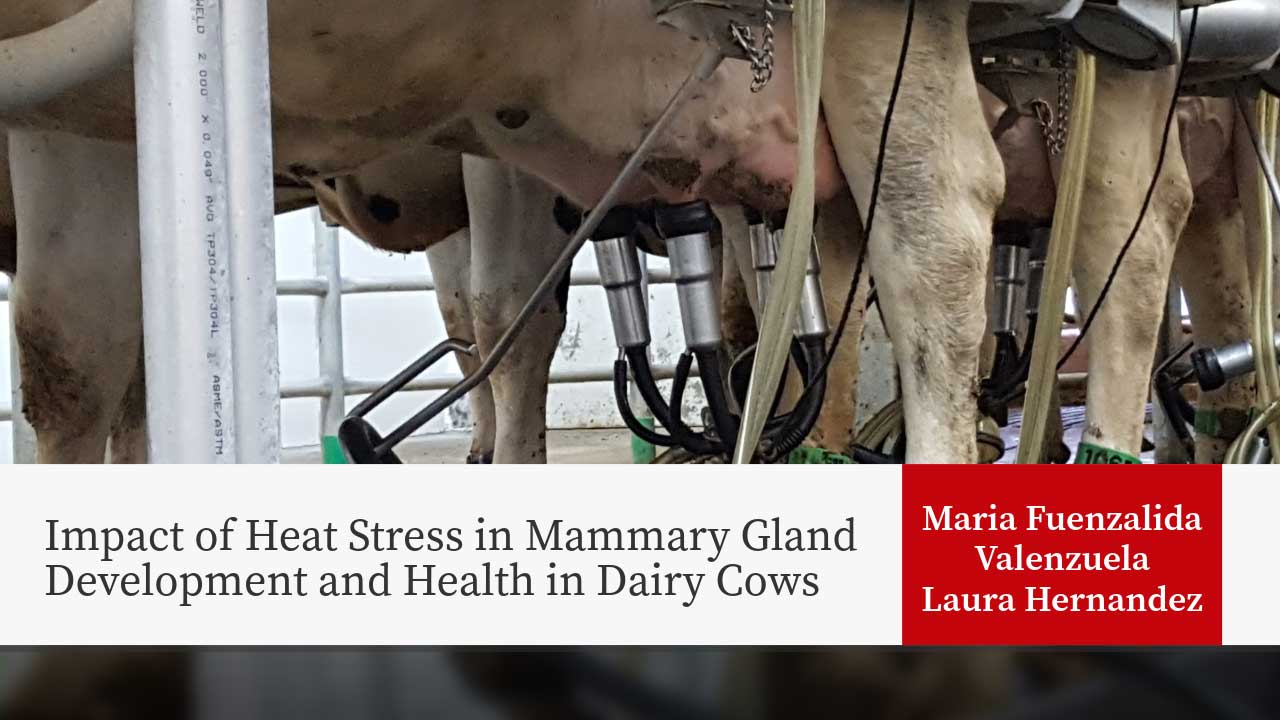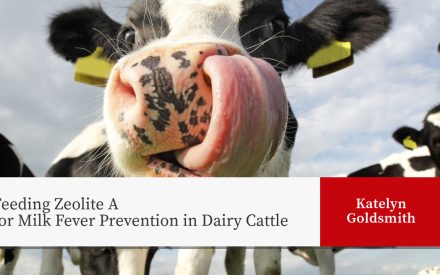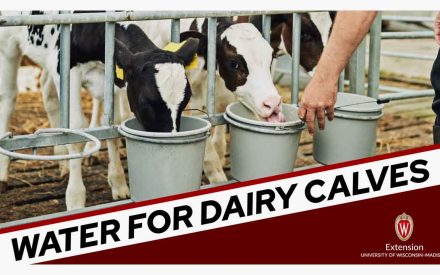
What is heat stress?
Heat stress occurs when the environment impacts a cow’s ability to get rid of body heat. Lactating cows thermoneutral zone is from 41°F to 77°F1, indicating that mature cows can handle lower temperatures better than higher temperatures.
How can you directly estimate if your cattle are suffering from heat stress?
A combination of environmental temperature and humidity, known as the temperature-humidity index (THI), is one of the best tools to reflect the true impact of the environment on the cow1. Direct ways of determining if an animal is suffering from heat stress include:
- Respiration rate. Resting respiratory rates for cattle range from 25 to 50 breaths per minute.1. Lactating cows with 60 breaths per minute or 1 breath per second are probably suffering from heat stress1.
- Rectal or vaginal temperature. Commonly used in controlled studies. Normal rectal temperature for cattle is between 101.5°F and 103.5°F.
Heat stress impacts mammary gland development
Calves and heifers need to be raised in an environment where temperatures are within their thermoneutral zone to achieve their maximal genetic potential. Failure to establish adequate environmental temperatures can dramatically alter development, behavior, health, and productivity of cows.
When cows are exposed to uncooled environments and suffer heat stress, mammary epithelial cells do not proliferate well, leading to lower milk production2. There is a generational effect on mammary development as well. Heifers born to cows experiencing late-gestation heat stress, also have reduced milk production potential2. So not only is the cow affected by heat stress, but her calf is also affected and loses genetic potential for milk yield by being exposed to heat stress in utero. Future milk production is negatively affected by heat stress because mammary growth is impaired; thus, it is imperative to provide heat abatement strategies to improve farm profitability.
Heat stress impacts mammary gland function
Heat stress may negatively affect the process of involution during the dry period due to reduced estrogen levels and increased prolactin levels. We know that during early stages of involution, many immune cells are active in the mammary gland to prepare mammary tissue for the next lactation. Successful immune function is very important to protect the mammary gland during the lactating and non-lactating period.
Some negative impacts of heat stress2 are:
- Decreased milk production in subsequent lactations
- Increased bulk tank somatic cell counts
It is important to emphasize that heat stress is not the only factor that can negatively impact milk production and somatic cell counts during the warm season. Other factors, including reproductive strategies, herd and nutritional management can impact productivity on a dairy.
Heat stress impact on intramammary infections
Incidence of mastitis can increase during the warm season. Heat stress poses a negative effect on udder health as it causes a reduction in the functionality of the immune system of lactating and dry cows1. Immune suppression can last for a long period of time and can have a detrimental impact on how cows respond to pathogen exposure. All these factors contribute to increase the probability of intramammary infections and to decrease milk quality. Along with putting in place heat abatement strategies on your herd, you need to reduce the exposure to mastitis-causing pathogens at the teat end. To reduce risk of mastitis follow the National Mastitis Council Recommended Mastitis Control Program ↗️.
During warm months pathogens such as, Trueperella pyogenes increase in prevalence causing mastitis mainly in pastured cows and is associated with an increase in fly populations. Some clinical symptoms of mastitis include swollen and painful quarters and/or teats. Systemic signs include fever, being off-feed, depression, and even death. Mastitis caused by Trueperella pyogenes often results in purulent lesions in quarters, and fetid and purulent milk4. The incidence of this type of mastitis can be exacerbated if farmers do not implement measures to abate heat. To prevent and control these cases, farmers need to talk to their herd veterinarians to establish appropriate mastitis treatment protocols, dry cow therapy protocols, and implement protocols to reduce exposure to flies.
Heat stress abatement
Some strategies to reduce the negative impacts of heat stress on lactating and dry cattle are1:
- Provide shade for cows housed on pasture or in an open lot. A minimum of 19 ft2 of space per cow is recommended.
- Active cooling is achieved with a combination of soaking cows with water and using fans. Cattle should be repeatedly soaked with water throughout the day. Installing soakers over the holding pen allows for animals to be soaked while waiting to be milked.
- Another form of active cooling is to use water to carry heat from the air. Installing misters over feeding areas along with fans allows for evaporative cooling while cattle are eating.
Remember to locate cooling in areas where cows will concentrate, for example, holding pens, and feed areas in free stall barns. Water on the cows must evaporate by the time they lie on their beds as we do not want water to be transferred to beds, thus allowing for the growth of mastitis causing bacteria.
References
- G. Dahl. 2018. Impact and mitigation of heat stress for mastitis control. Vet Clin Food Anim 34: 473-478.
- S. Tao, R. M. Orellana, X. Weng, T. N. Marins, G.E. Dahl, and J. K. Bernard. 2017. Symposium review: The influences of heat stress on bovine mammary gland function. J Dairy Sci 101:5642-5654
- National Mastitis Council recommended Mastitis Control Program: chrome-extension://efaidnbmnnnibpcajpcglclefindmkaj/https://manitowoc.extension.wisc.edu/files/2011/10/NMC-Mastitis-Control-Program1.pdf
- M. Rzewuska, E. Kwiecien, D, Chrobak-Chmiel, M Kizerwetter-Swida, I. Stefanska, and M. Gierynska. 2019. Pathogenicity and virulence of Trueperella pyogenes: A review. Int. J. Mol. Sci. 20:2737.
Download Article


 🎧 Listen: Lameness affects up to 50% of dairy cows during their lifetime
🎧 Listen: Lameness affects up to 50% of dairy cows during their lifetime Feeding Zeolite A for Milk Fever Prevention in Dairy Cattle
Feeding Zeolite A for Milk Fever Prevention in Dairy Cattle The importance of water for dairy calves
The importance of water for dairy calves Handling down cows
Handling down cows


